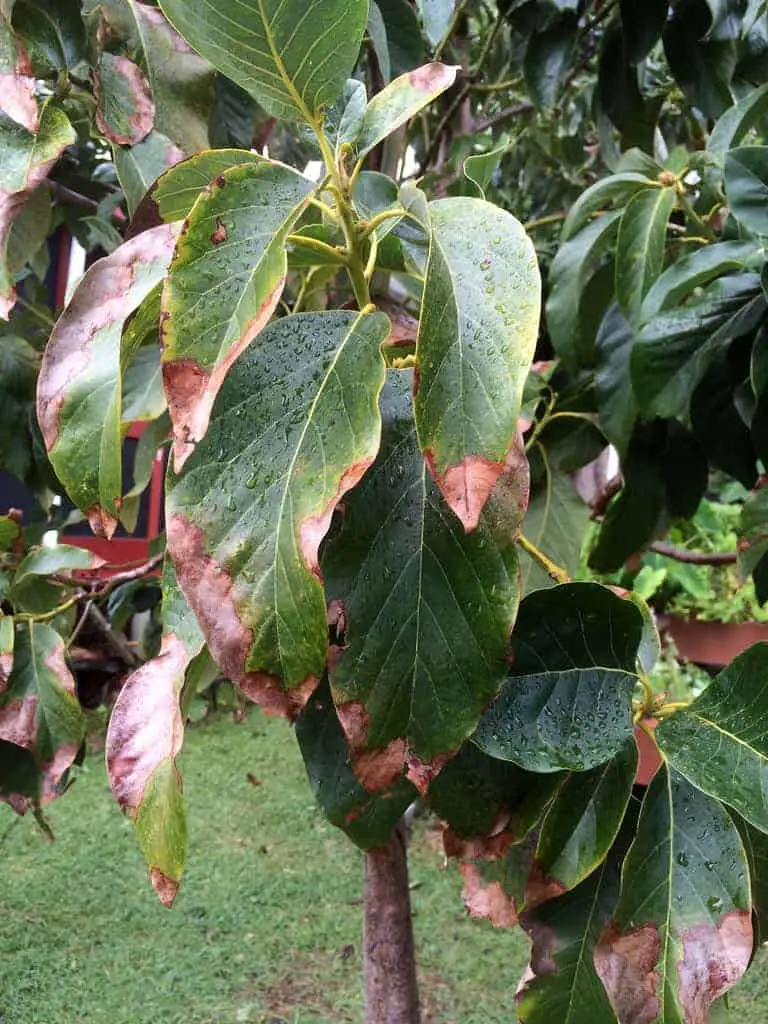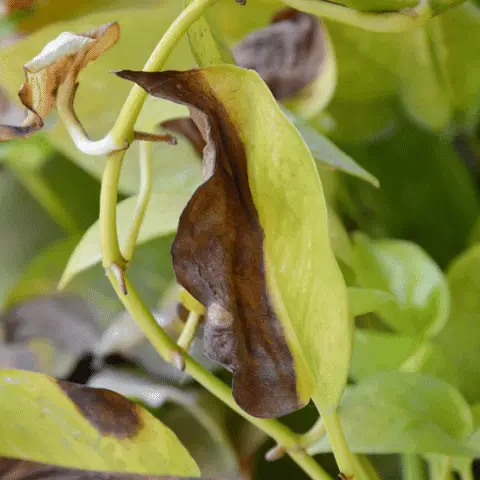It is likely that in your experience as a gardener, you have had plants suffering from pesticide burn at least once. You can probably go back to the fact that it was the insecticide that caused the deterioration of the plant. It is a fact that it usually happens a short time after treating the plants. In this article, I would like to clarify what pesticide burn is, the causes, and how to prevent it.
What Is Pesticide Burn On Plants?
Pesticide burn, also known as phytotoxicity or chemical burn, usually occurs when pesticides are not correctly sprayed on plants or when incompatible chemicals are applied simultaneously. The signs of chemical burn on plants are easily recognizable. They include the following:
- Burn (damaged tip, leaf spots)
- Necrosis (death of plant tissue)
- Chlorosis (yellowing of the leaf)
- Leaf Distortion
These signs are not to be confused with pests or fungus infestation.If pesticide burn is severe, it may lead to the plant’s death.
What Are The Causes Of Leaf Burn On Plants?
The causes of pesticide burn on plants can be numerous. Here are the most common:
- Herbicides
- Pesticides
- Excessive Fertilizer:
- Water
Let’s give a further look at these causes:
Herbicides: Ornamental and domestic plants are more susceptible to phytotoxicity.
One of the most common factors leading to this condition is the use of herbicides. For example, lawn herbicides used to kill weeds can accidentally harm other plants if not used properly. Extra care must be taken not to use equipment or containers contaminated from previous use with hormonal herbicides. If herbicides are absorbed by the roots of the plants, it will damage the whole plant. It will lead to a cycle of marginal burns and defoliation. This cycle can continue until the plant dies or the chemicals are no longer present in toxic levels.
All equipment used to apply herbicides must be well marked and must not be used for other purposes.
Pesticides: Insecticides and fungicides (even organic ones) can cause damage to some plants. One must always follow the instructions that are indicated on the product label before use. A golden rule for all types of pesticides is to try the product on a small part of the plant and return the next day to see what its effect is on the plant. This rule also applies to homemade insecticides and fungicides. Apply pesticides early in the morning or late in the afternoon. Avoid the warmest hours of the day. Never use pesticides on rainy or windy days.
Never apply pesticides on plants that are already suffering or damaged. Pesticides may leave residues in the soil long after applying them to the plants. This can lead to a problem when doing crop rotation, since a pesticide used to control the pests on a specific plant may end up damaging another plant. Again, it is crucial to read and apply the pesticide according to the product label.
Drift Problems when using Pesticides: Keep in mind that when sprayed, pesticides are volatile and can contaminate other plants by air, especially in the presence of wind. When using a pesticide, it is essential to consider the plants of our garden as a whole. It means that we will have to consider the susceptibility of the target plant, as well as that of other plants in the area. For example, when plants in a greenhouse are treated with pesticides, it could lead to contamination of other plants present since the pesticides toxic vapors are trapped in a hot and humid environment.
Drift can be minimized in a few simple steps:
- Choose a safe pesticide for both target and non-target plants.
- Choose application methods that reduce pesticide drift. Airblast sprayers should never be used to apply herbicides, as its vapor can kill non-target plants.
- If possible, create a barrier around the target plant
- Remove non-target plants from the area.
Some of the most common chemicals present in the pesticides and fungicides that affect our plants are Copper, Zinc Sulfate, and Sulfur.
Excessive Fertilizer: Excessive fertilizer can also lead to chemical burn on the foliage. Yellowing and withering are some of the symptoms that will appear. It is possible to spot the effects on the plant within a day or two after the application. The damage to the plants is more severe in hot, dry weather. This is due to soluble salts that are used in fertilizers that can pull the moisture out of root tissues. Under drought conditions, this can result in plant death since the salts are more concentrated in the soil. It is possible to prevent problems of fertilizer burn by applying slow-release organic fertilizers or adding 1-2 inches of compost into the soil each year.
Water: Often, even just spraying water onto plant foliage can lead to leaf burn, and it could be confused with pesticide burn. This happens when watering is done during the hottest hours of the day. The sun heats the water on the leaf, which acts as a magnifying glass: it intensifies the sunlight, causing the leaf to overheat and burn.
To prevent this problem, avoid watering in the middle of the day when the sun is intense. Make sure to water, fertilize, and spray chemicals early in the morning or before sunset. As a general rule, it is always preferable to water the soil around the plant and not directly on its foliage.
What To Do When A Plant Suffers from Pesticide Burn?
Once you identified the problem that caused the chemical burn, you can take the following steps:
In the case of excessive fertilizer: Soak the soil with water to flush the excess of soluble salt that is used in the fertilizers. This procedure will restore the necessary hydration to the roots.
In case of pesticide burn: Once your plant has burned leaves, tips or margins, unfortunately, there’s no way to reverse the damage. The only thing left to do is to provide the plant with the optimal nourishment and light conditions in order to recover and continue healthy growth.
Some of the links above are affiliate links, meaning at no additional cost to you, I will earn a commission if you click through and make a purchase.


